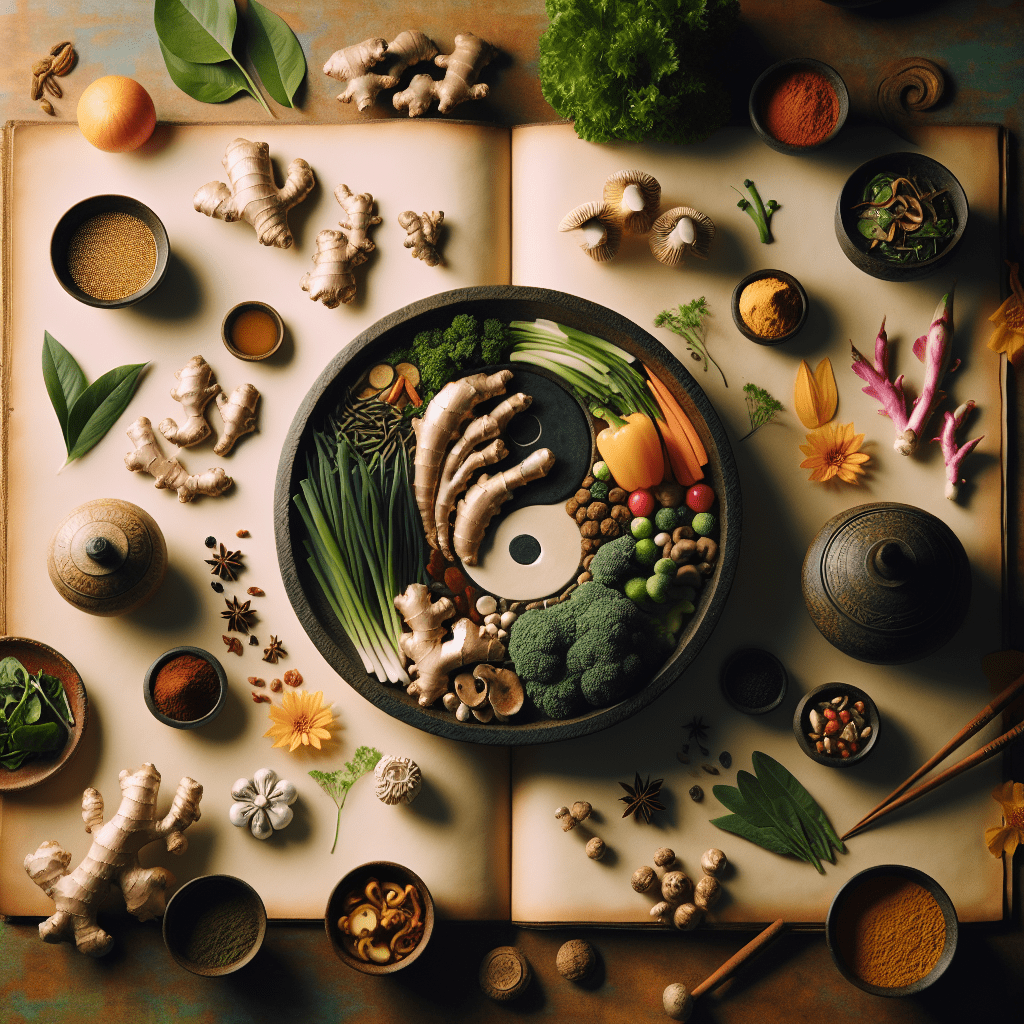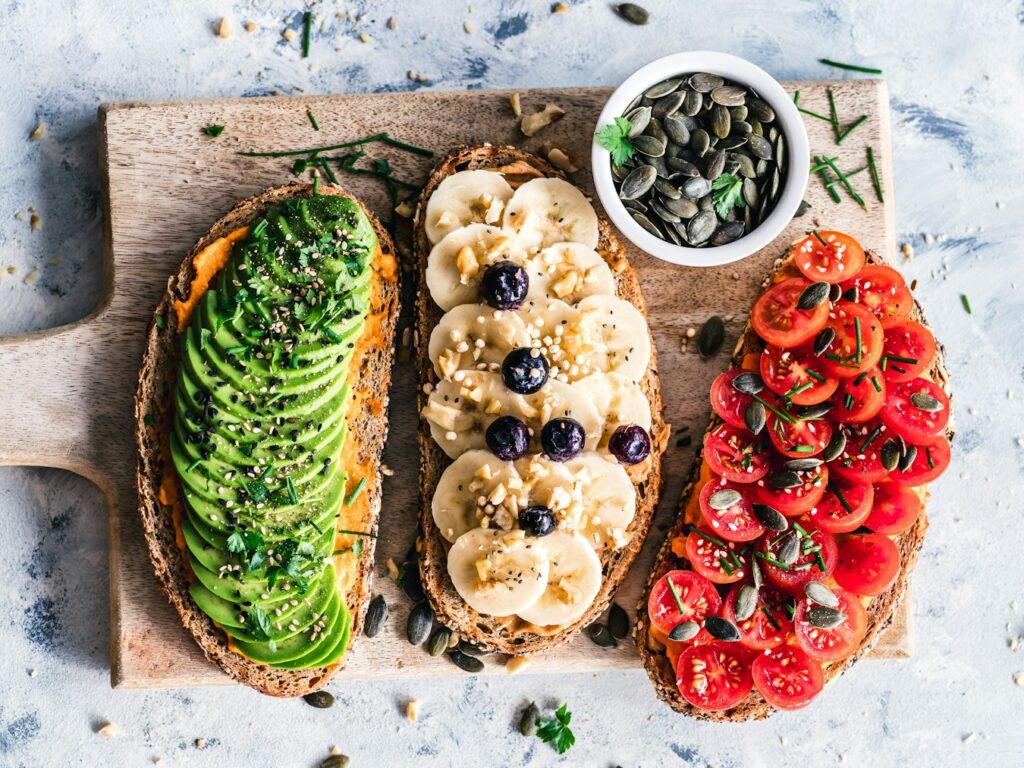Have you ever felt like your relationship with food was complicated? I certainly have. For years, I viewed eating as just a necessity—fuel to get through the day. But everything changed when I discovered holistic eating, an approach that transformed not just my plate, but my entire well-being.
Holistic eating isn’t just another diet trend. It’s a mindful approach that honors the connection between our bodies, minds, and spirits through the foods we consume. This ancient wisdom, deeply rooted in Eastern healing traditions, views nourishment as a sacred practice that impacts every aspect of our health.
When I first heard about holistic eating, I was skeptical. Could something so simple really make such a difference? But as I gradually incorporated these principles into my daily life, I noticed profound changes—better energy, clearer thinking, improved digestion, and a deeper sense of connection to my body’s needs.
The beauty of holistic eating for beginners is that it doesn’t require complicated meal plans or expensive superfoods. Instead, it invites us to return to basics, embracing whole foods and mindful practices that have supported human health for centuries.
The Power of Whole Foods: Nature’s Perfect Package
The foundation of holistic eating begins with whole foods—ingredients that remain close to their natural state, unprocessed and unrefined. Think vibrant vegetables, fresh fruits, whole grains, legumes, nuts, seeds, and quality proteins.
When I first committed to eating more whole foods, the difference was remarkable. Within just weeks, I noticed my energy levels stabilizing throughout the day, no more afternoon crashes that sent me reaching for coffee or sugary snacks.
What makes whole foods so special? Unlike processed foods designed to have a long shelf life, whole foods contain all their natural nutrients in perfect balance. Eastern nutrition principles, which date back thousands of years, have long emphasized this wholeness. In traditional Eastern medicine, foods are valued not just for their nutritional content but for their energetic properties and how they support the body’s natural balance.
“Our findings reframe how we define clinical success,” explains one recent study on whole foods diets. “People who do not lose weight can still improve their metabolism and reduce their long-term risk for disease” simply by focusing on nutrient-dense whole foods.
The transition doesn’t have to be overwhelming. I started by simply swapping one processed food for a whole food alternative each week. White rice became brown rice. Potato chips became almonds. Pre-packaged snacks became fresh fruit with nut butter. Each small change built upon the last, gradually transforming my plate—and my health.
Mindful Eating: Slowing Down to Taste Life
In our busy world, eating often happens on autopilot—in front of screens, while driving, or rushing between meetings. But holistic eating invites us to slow down and bring awareness to the experience.
Mindful eating transformed my relationship with food. Instead of mindlessly consuming whatever was convenient, I began to truly experience my meals—the flavors, textures, and aromas. I started noticing how different foods made me feel, not just while eating them but hours later.
Here are some simple mindful eating practices that changed my approach:
- Taking three deep breaths before beginning a meal to center myself
- Eliminating distractions like phones, television, or computers while eating
- Chewing thoroughly (aim for 20-30 chews per bite)
- Setting down my fork between bites
- Expressing gratitude for my food and all those who helped bring it to my plate
“It’s all about slowing down, reflecting, and appreciating the food you are eating and thinking about how it is nourishing your body and mind,” notes one mindfulness expert. This approach not only enhances enjoyment but helps prevent overeating by allowing us to recognize fullness cues.
I was surprised to discover that when I ate mindfully, I actually needed less food to feel satisfied. By paying attention to my body’s signals, I naturally began eating appropriate portions without counting calories or measuring servings.
Balance and Variety: The Colorful Path to Vitality
Eastern nutritional philosophies have long emphasized balance and variety in creating optimal health. Unlike Western nutrition that often focuses on individual nutrients, Eastern approaches view foods as energetic influences that can help restore harmony within the body.
One of the simplest ways I’ve found to ensure balance is by filling my plate with a rainbow of colors. Red tomatoes, orange carrots, yellow peppers, green leafy vegetables, purple cabbage—each color represents different phytonutrients that support various body systems.
“The nutrients in whole foods help reduce inflammation, maintain a healthy body weight, and boost heart health,” explains one nutritional study. This natural diversity provides synergistic benefits that no supplement can replicate.
Eastern healing traditions view food as medicine, a concept that EASTCHI AI has brilliantly integrated into modern wellness approaches. According to this philosophy, every food has inherent properties that can either support or challenge our individual constitutions.
For example, warming spices like ginger and cinnamon can energize someone feeling lethargic, while cooling foods like cucumbers and mint might balance someone experiencing excess heat. This personalized approach recognizes that no single diet works for everyone—our needs are as unique as our fingerprints.
When I embraced variety in my meals, I discovered foods I’d previously overlooked and developed a more adventurous palate. More importantly, I found that diverse eating naturally provided all the nutrients my body needed, without obsessing over individual vitamins or minerals.
The Healing Power of Spices and Herbs
One of the most delightful aspects of holistic eating is the exploration of spices and herbs. These flavor-enhancers aren’t just about taste—they’re potent medicine cabinets disguised as pantry staples.
Eastern culinary traditions have used herbs and spices therapeutically for thousands of years. Turmeric reduces inflammation, ginger aids digestion, cinnamon helps balance blood sugar, and garlic supports immune function. These simple ingredients can transform both the flavor and healing potential of everyday meals.
I began incorporating more spices into my cooking with simple additions—cinnamon in my morning oatmeal, turmeric in scrambled eggs, fresh herbs sprinkled over salads. Not only did my meals taste more interesting, but I noticed subtle improvements in my digestion and fewer seasonal illnesses.
Cooking methods matter too. Traditional Eastern preparation techniques like steaming and stir-frying preserve nutrients while enhancing digestibility. I found that lightly steamed vegetables were not only more vibrant and flavorful than boiled ones but left me feeling energized rather than sluggish after meals.
The EASTCHI AI approach aligns perfectly with these principles, offering personalized guidance based on Eastern medicine’s deep understanding of how different foods influence our individual constitutions. This tailored approach recognizes that the same food might energize one person while depleting another—a nuanced perspective often missing in one-size-fits-all diet plans.
Small Steps for Big Changes: The Beginner’s Path
Perhaps the most valuable lesson I’ve learned on my holistic eating journey is the power of small, consistent changes. Attempting a complete dietary overhaul often leads to frustration and abandonment. Instead, gradual implementation creates sustainable habits that last.
Here are the five simple steps that transformed my approach to eating:
Start with breakfast: I began by making just one meal each day more whole-food focused. Breakfast was my choice because it set a positive tone for the day.
Add before subtracting: Instead of focusing on foods to eliminate, I concentrated on adding more whole foods to each meal. Naturally, as I filled up on nutrient-dense options, processed foods gradually fell away.
Practice mindful eating for just five minutes: Even on busy days, I committed to eating the first five minutes of one meal without distractions. This small window of mindfulness expanded naturally over time.
Experiment with one new herb or spice each week: This simple challenge made cooking more adventurous and gradually built my confidence with flavor combinations.
Listen to your body’s response: I started paying attention to how different foods made me feel, keeping a simple journal to track energy, mood, and digestive comfort after meals.
These steps might seem small, but their cumulative effect was remarkable. Within months, my entire approach to eating had shifted—not through willpower or restriction, but through curiosity and positive additions.
The Food-Mood Connection: Eating for Emotional Wellbeing
One of the most surprising discoveries on my holistic eating journey was how profoundly food affects not just physical health but mental and emotional wellbeing.
“Eating a healthy, balanced diet can help us think clearly and stay alert,” notes one nutrition researcher. “It can also improve our concentration and attention span.” I found this to be dramatically true in my own experience.
Before embracing holistic eating, I experienced frequent energy crashes, mood swings, and brain fog. By stabilizing my blood sugar through regular meals of whole foods, I discovered a new level of emotional resilience and mental clarity.
Eastern healing traditions have long recognized this connection between digestion and mood. According to these ancient wisdom traditions, properly nourished digestion creates not just physical vitality but mental clarity and emotional balance.
The approach to food that EASTCHI AI champions acknowledges this profound connection, viewing proper nutrition as foundational to both physical and emotional wellbeing. Their integration of Five Element Theory provides insights into how specific foods might influence our emotional states based on our unique constitutions.
By paying attention to how different foods affected my energy and mood, I developed a personalized understanding of what works for my body. Coffee, which many people enjoy, left me jittery and anxious. Sweet potatoes, on the other hand, provided sustained energy without crashes. These discoveries were empowering—no expert knew my body’s responses better than I did.
Embracing Simplicity: The Heart of Holistic Eating
Perhaps the most liberating aspect of holistic eating is its emphasis on simplicity. In a world of complicated diet rules and conflicting nutrition advice, returning to simple, whole foods provides a refreshing clarity.
I found that keeping meals uncomplicated actually made healthy eating more sustainable. A simple rotation of favorite meals, adjusted seasonally based on available produce, removed the decision fatigue that often leads to convenience food choices.
Eastern nutrition principles emphasize eating according to nature’s seasons—cooling foods in summer, warming foods in winter. This natural rhythm not only ensures variety throughout the year but aligns our bodies with the world around us.
The holistic approach championed by HerbalsZen recognizes that true health emerges from this harmonious relationship with nature’s cycles. Their EASTCHI AI platform brilliantly translates these ancient principles into practical, personalized guidance for modern life.
As I’ve continued on this journey, I’ve discovered that holistic eating isn’t a destination but a path—one that continues to unfold with new insights and deeper understanding. The simple practices I began with have evolved naturally as my awareness has grown.
What started as curiosity about holistic eating has become a transformative lifestyle that nourishes not just my body but my entire being. The simple act of choosing, preparing, and mindfully consuming whole foods has become a daily practice of self-care and connection.
If you’re just beginning to explore holistic eating, remember that the journey of a thousand miles begins with a single step. Choose one small practice from this article and experiment with it this week. Notice how it feels, adjust as needed, and build from there.
Your holistic eating journey will be uniquely yours—informed by your body’s wisdom, your cultural background, and your personal preferences. Trust that process of discovery, knowing that each mindful choice builds upon the last, gradually creating a nourishing relationship with food that supports your whole self—body, mind, and spirit.



